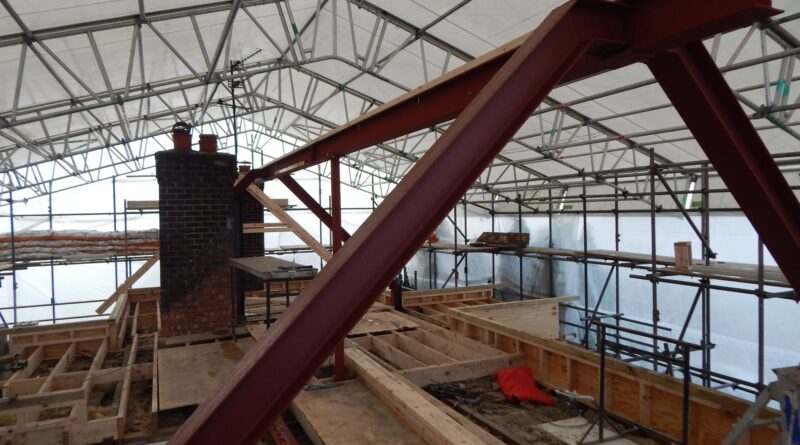If you are working anywhere near a construction site, think of this as a list of the best practices to keep everyone on a construction site safe and sound. Construction is exciting, we all agree. However, it’s also risky, especially when dealing with heavy steel.
So, how can we make sure that everyone is safe at the site? Let’s dive into these safety guidelines and explore the world of steel installation together.
1. Safety Training and Orientation
First things first, let’s talk about training and orientation. You wouldn’t go on an adventure without first knowing the land, right? The same goes for construction. Everyone involved in steel installation needs to know the score when it comes to safety. That’s why you need these orientation sessions.
Before you jump into the world of steel, you need to be briefed on the dos and don’ts. It’s like your construction survival guide. Think of it as the construction initiation ceremony! Plus, you need to have regular safety chats to make sure everyone’s up to speed.
2. Personal Protective Equipment (PPE)
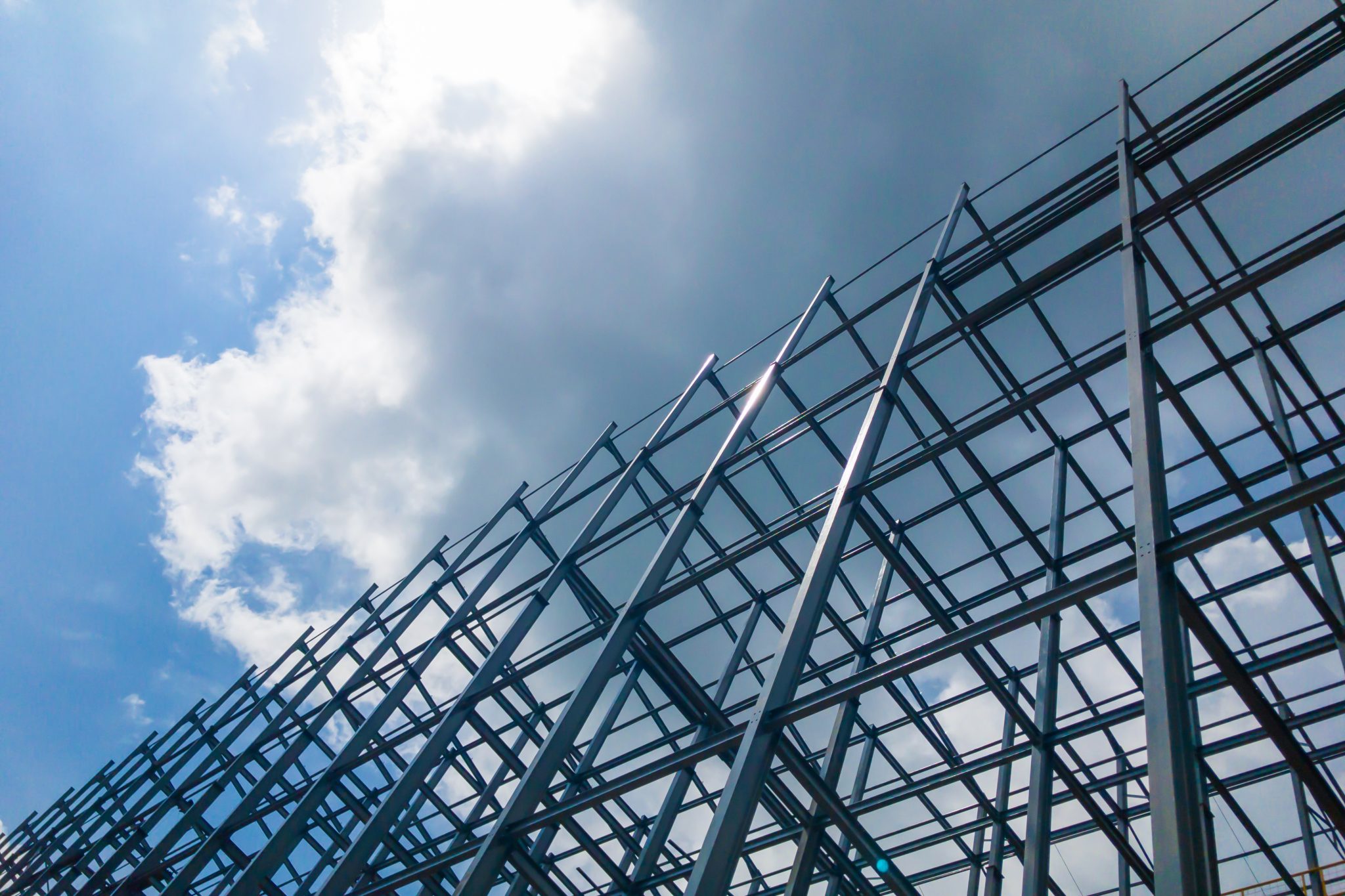
source: pinterest.com
Now, PPE is the safety shield of the construction world. Hard hat, safety glasses, steel-toed boots, gloves, and that high-visibility vest. They’re not just for looks; they’re your armor on the job.
And remember, you shouldn’t head to work without your PPE. Check your gear, make sure it’s not broken or battered, and put it on with pride.
3. Safe Work Practices
Okay, onto safe work practices. This is like the code of conduct for the construction world and every construction site has rules. Let’s start with lifting – you don’t want to throw out your back, do you? So, there are techniques for that. Lift with your legs, not your back. It’s like a gym workout with a purpose.
Next up is rigging and hoisting. You want to be sure everything’s in tip-top shape. Always check your rigging gear, and ensure it’s not frayed or damaged. And before you raise something heavy into the air, make sure it’s properly attached and secured. Safety first, always!
4. Site Assessment
Picture this: You’re exploring uncharted territory and have to check for traps and obstacles. That’s pretty much what a site assessment is all about. You need to look for possible threats.
When you spot something, you must deal with it – because the construction site is not an adventure playground. Safety is the priority, and site assessments are like the treasure map to that safety.
5. Communication
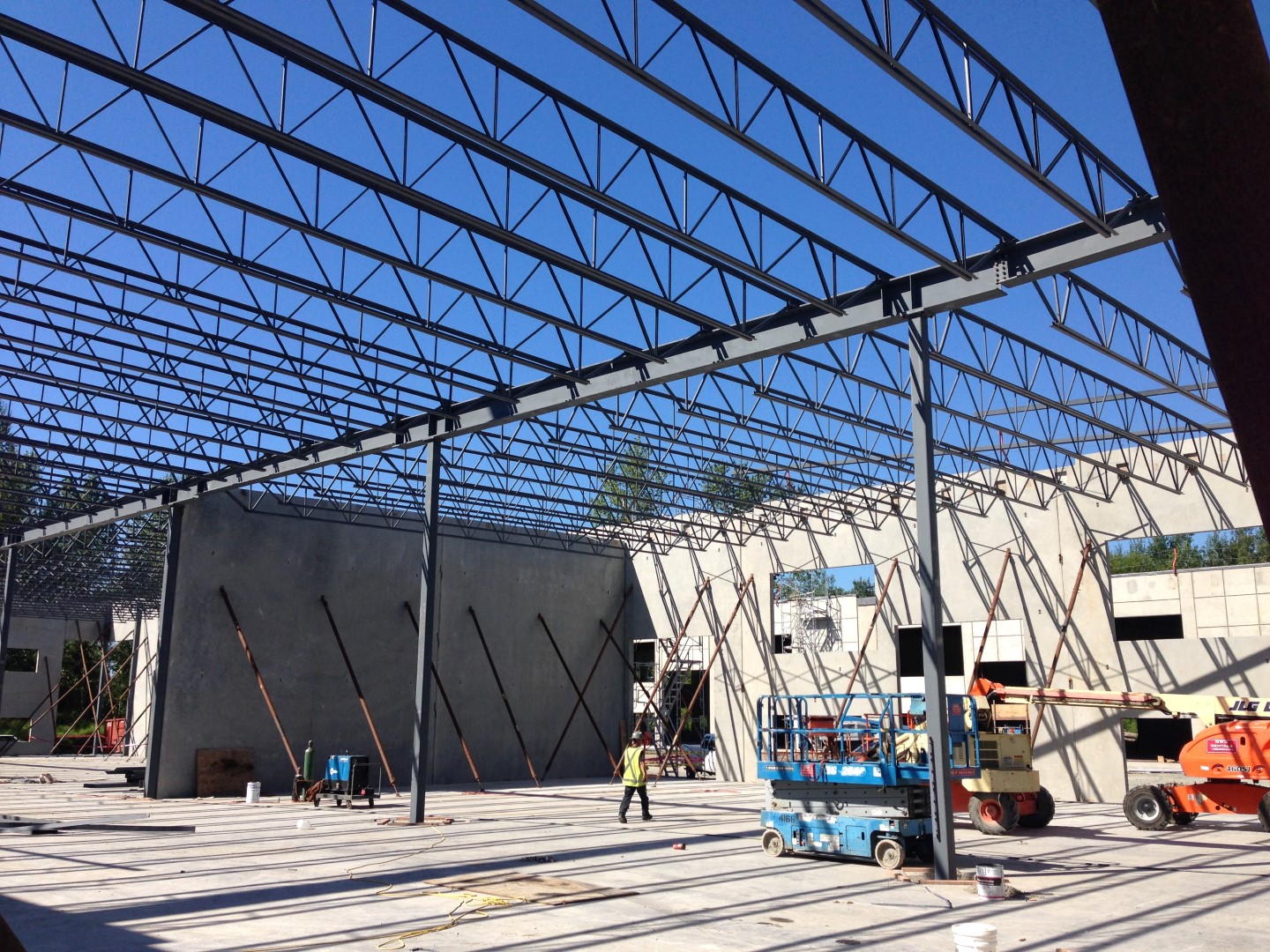
source: pinterest.com
Communication is the glue that holds the construction world together. Imagine a construction site without it – it would be like trying to build a puzzle blindfolded. Hand signals and radios are used to make sure everyone’s on the same page.
And it’s not just about tools and gadgets. Safety meetings are held to discuss important things, like changes in the plan or any safety concerns.
6. Proper Rigging and Lifting
Now, rigging and lifting are like the magic tricks of steel installation. When you want to master something, you practice it to the point of perfection. That’s what you need to do with rigging equipment. It needs to be in top shape, and you have to check it regularly.
Before the big show (or lifting operation), you have to make sure everything is securely fastened and ready to go. So be sure to use top-notch materials, especially when it comes to instrumentation fastening, as this plays a crucial role in any steel installation construction.
7. Fall Protection
Falling from heights is no fun. Imagine climbing a tree, and then, whoops! Fall protection is like a safety net for tightrope walkers. It’s there to catch you if you stumble. You need to use guardrails, safety nets, and personal fall arrest systems.
8. Fire Safety
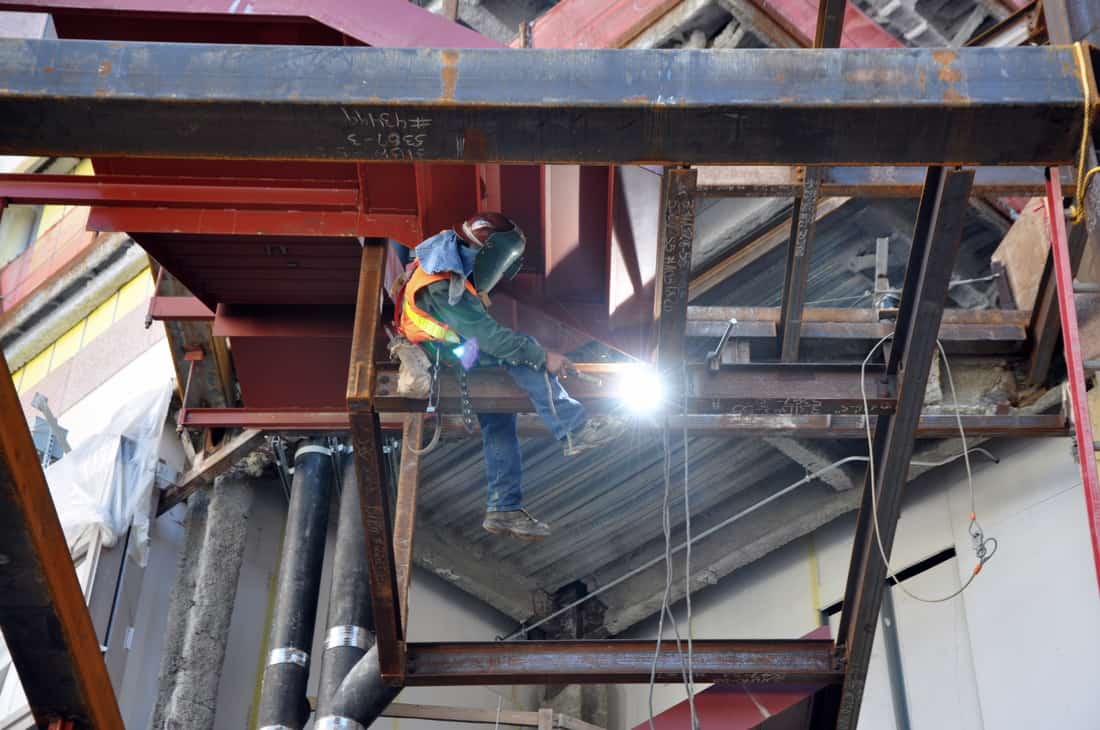
source: pinterest.com
We can’t talk about safety without talking about fire safety. Welding and cutting – are the fiery activities in construction. So, you should have special zones for these operations. And if a fire breaks out, you need to have your trusty fire extinguishers ready. It’s all part of being prepared, just like having a first-aid kit handy.
9. Tool Safety
Tools, tools, tools – they’re like the gadgets in a superhero’s utility belt. However, they can also be dangerous if you’re not careful. Regular inspections, maintenance, and proper storage are crucial.
10. First Aid and Emergency Response
Every hero needs a first-aid kit in their utility belt, right? You need to have all the medical supplies on the site. However, that is not enough; all the workers need to know how to use them in case of an emergency.
You can also prepare an emergency response plan to avoid any unwanted delays or confusion during an emergency. This way, no one loses their cool and first aid is as prompt as possible.
11. Hazardous Materials Handling
Now, think of hazardous materials like the villains in our story. We need to handle them with care, store them properly, and follow all the rules. Safety is our shield against these bad guys.
12. Clean and Organize
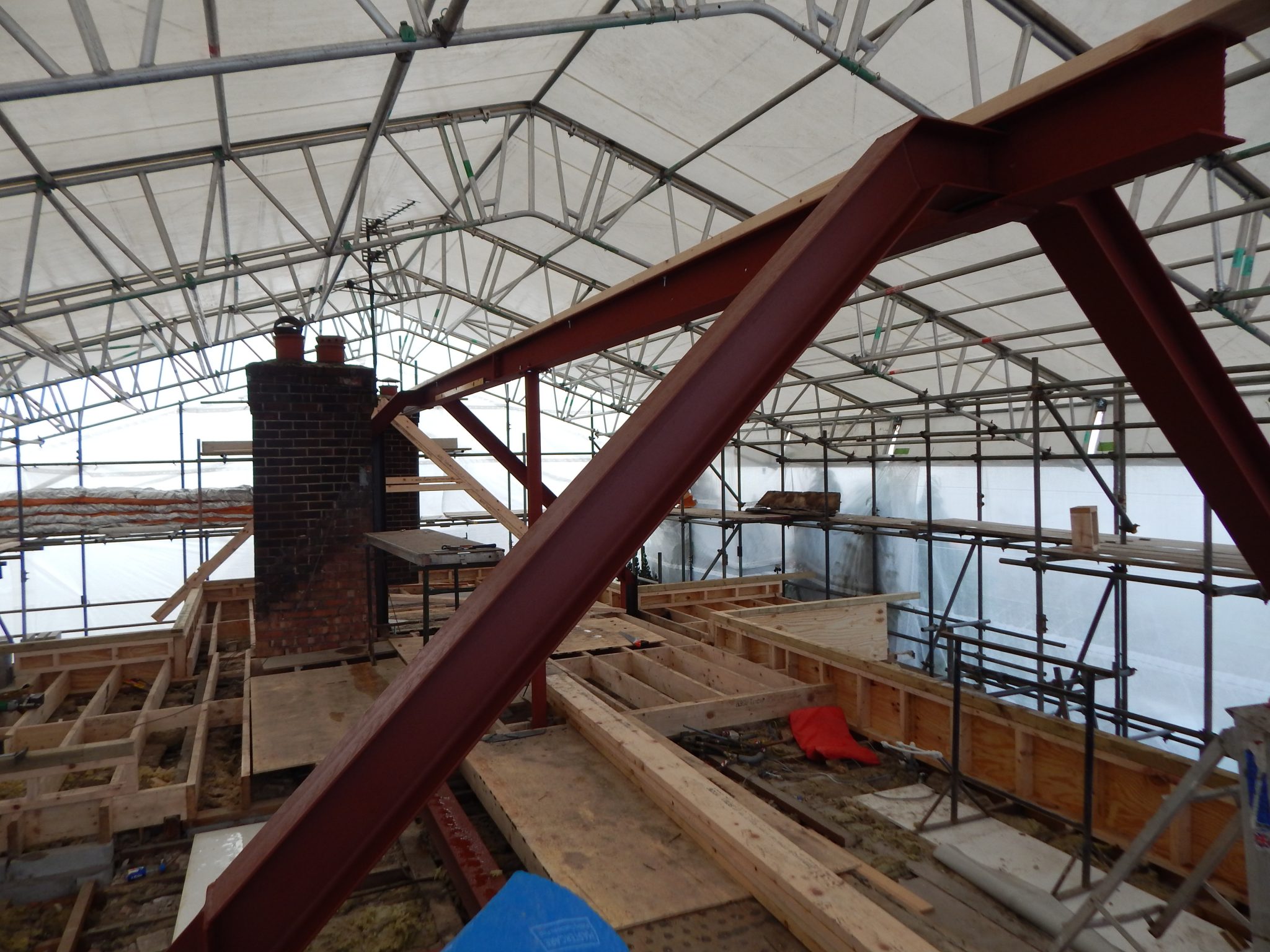
source: pinterest.com
A clean and organized workspace is not just about being neat freaks. It’s about preventing accidents. You don’t want to trip on a banana peel, right? So, you have to keep your site clean and organized. Having a clutter-free workplace goes a long way in avoiding accidents.
14. Site Access and Egress
Safe entry and exit from the construction zone are key. You have to keep those walkways clear, and you should be good to go.
15. Regular Safety Meetings
The safety meetings are like family dinners where we all share stories and catch up. It can be your way of talking about what’s happening and any concerns and learning from each other. It’s like a construction support group but without the coffee and donuts.
16. Documentation
It goes without saying that you need to keep documentation just to be ahead of any possible problem. You must keep records of everything – safety inspections, incident reports, safety training. It’s like our construction diary, full of notes and observations.
17. Regulatory Compliance
Breaking the rules is not acceptable at any cost. You must stay on top of all those safety regulations and follow them to the letter. It’s the law and common sense. Like driving within the speed limit, but for construction.
18. Continuous Improvement
Last but not least, allow everyone involved to share their thoughts and suggestions to make the safety practices even stronger. They might have ideas on improving your arrangement or adding something new you might need.
Final Thoughts
So, there you have it, a guide to on-site safety during steel installation. Remember it’s something that’s always evolving and improving. Stay safe out there, and let’s build amazing structures together – one safe step at a time!

